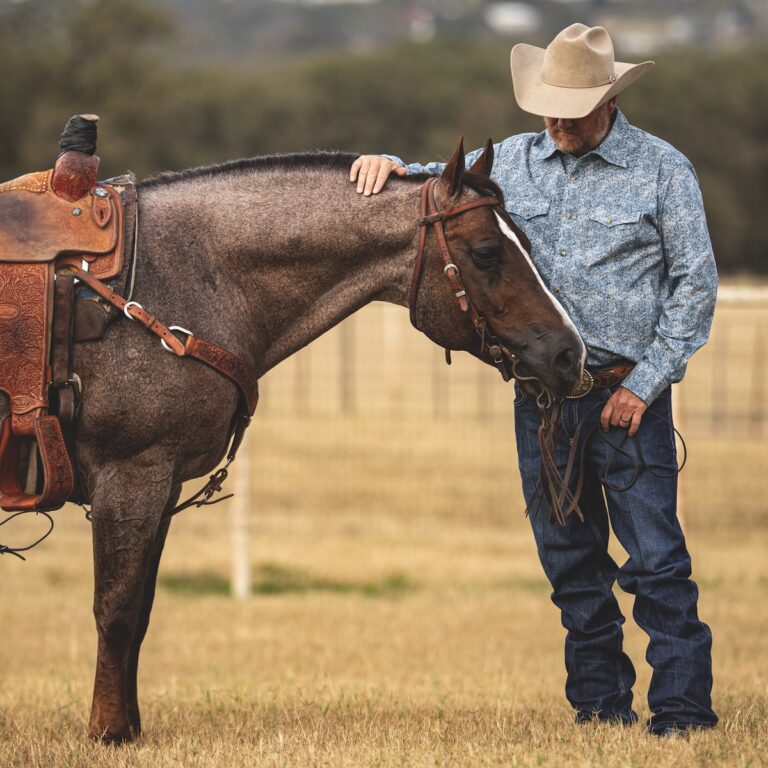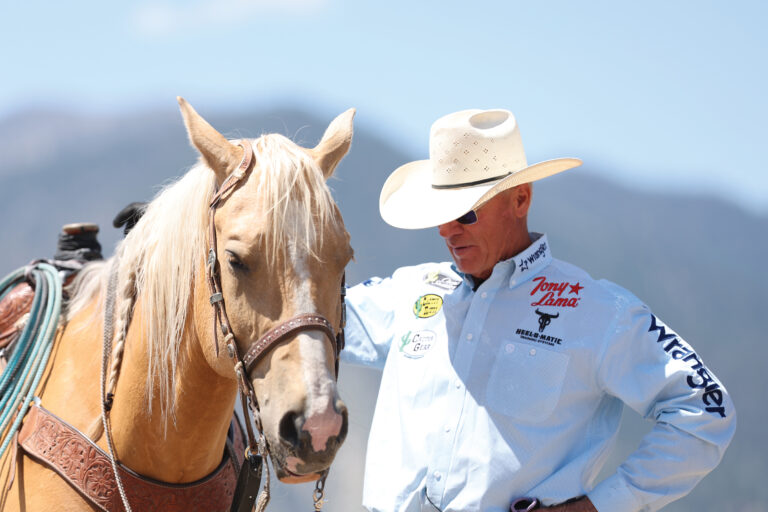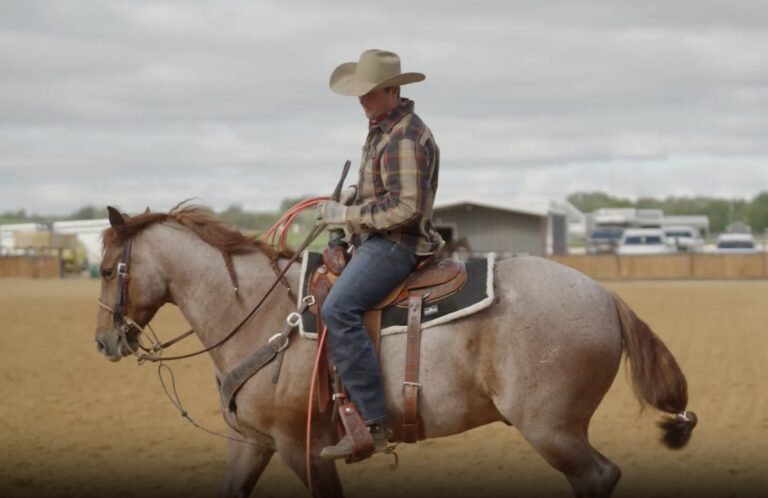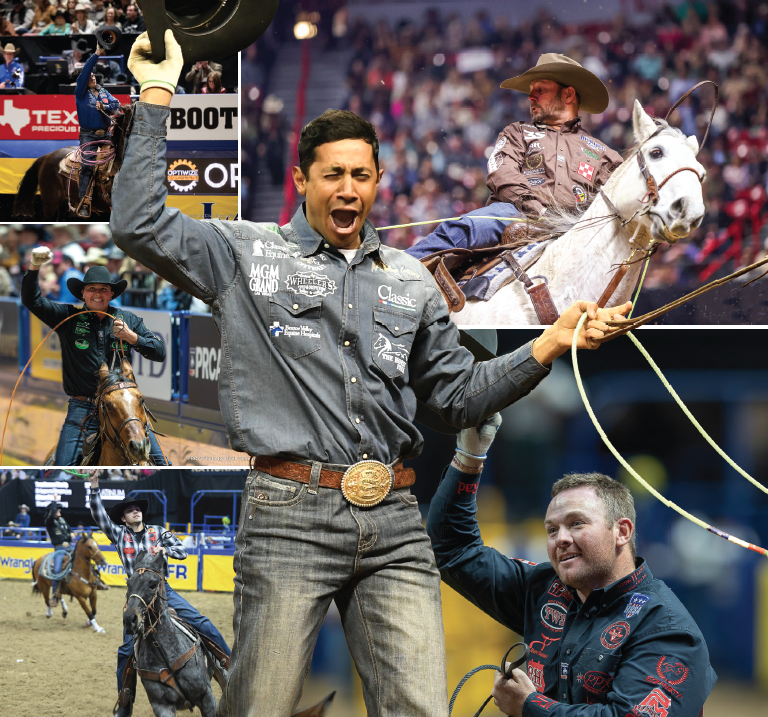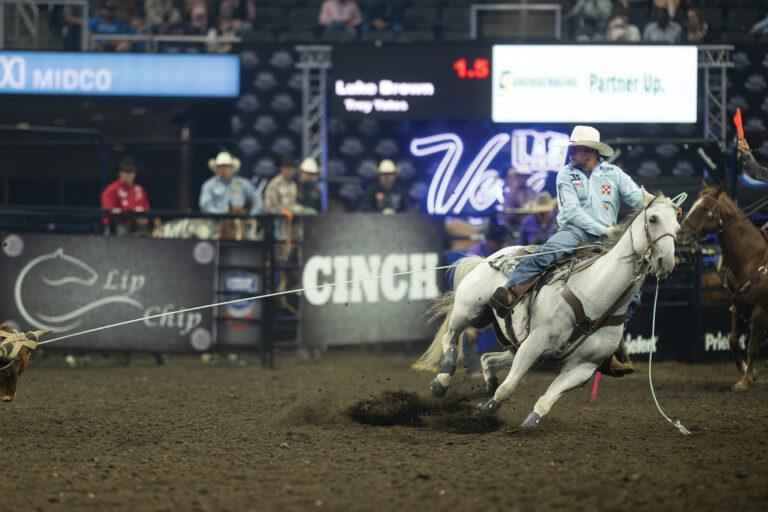It’s hard to say which aspect of J.D. Yates’ career is most Hall-of-Fame worthy. There’s the staggering fact he made the first of his 21 NFR appearances as a 15-year-old kid. There’s also his horsemanship. Yates has won somewhere north of 47—yes, 47—AQHA world championships, plus multiple futurities.
That means he’s hired someone to rope the other end countless times and depended on the other guy to finish off the winning run. Nobody got better at choosing good help. Yates relied heavily on his cousin, Jay Wadhams, over the years and, more recently, on his son Trey.
Today, good helpers are becoming more and more in demand. We thought it’s worth highlighting a few of the best helpers—and help horses—in history.
A good horse

Two horses raised by the Yates family probably took more runs and got more wins than any other help horses over the years.
“Mailbox could really take a jerk and had a lot of suck-back and could get those head horses to come around,” Wadhams recalled. “I took him everywhere and used him to help J.D. And they had a gray head horse I rode called Taxi that J.D. later tripped on.”
Dick and Jan Yates raised Mailbox, registered as Mighty Pokey To, by Bar Flits Pokey and out of Mighty Mindy, the same dam as Kelly Yates’ great Firewater Fiesta. Mighty Pokey To was a full brother to Flits Friend—the horse Yates won the first-ever PRCA/AQHA Horse of the Year title aboard in 1989. Taxi’s name was Fortune In Taxes—also bred by the Yates family—by Zan Gold Jack and out of the same mare, Mighty Mindy, by Mighty Wild.
Yates remembers those as the two go-to horses, plus a little bay called Spock (registered as Are Mac San, by Are D San out of Shilohs Danae by Jericho Lark) that carried him to at least two AQHA world titles. That was also the horse Wadhams rode inside the Thomas & Mack Center in ’96 when he heeled for Yates (not a bad help horse). In true Yates fashion, Mailbox was also heeled on at the NFR and Yates roped calves on him, plus his sister Kelly ran barrels on him quite a bit.
“A good horse is one you can win on,” Yates said simply. “That doesn’t mean everybody thinks it’s a good horse. It’s one that you personally can ride to win on. Jay mainly rode Mailbox and Taxi to help me, and they were two solid citizens who gave you the same look every time and never took a throw away.”
Older, veteran horses on both ends have been Brock Hanson’s ace in the hole as a helper, too. The Western Colorado native headed for Ryan Motes at the 2012 NFR before switching to heeling. His prowess on both ends has made him one of the most desired helpers in the game. Truth is, he makes his sole living doing that now—and on a better string of horses than he ever had rodeoing.
“A lot of my help horses have been to the big rodeos and big jackpots,” Hanson said. “They’re super seasoned and finished; mostly over 12 years old. I try to take horses that aren’t going to make very many mistakes. I’m proud of the horses I’ve put together.”
Of the six head Hanson hauls to each futurity, he has his favorites. But when it’s short-round time, he steps on the gray named Ranger ID Coon—his own “safety net” he bought from Jeff Hilton last year by Ranger Cookie out of Blanton ID JoAnn, by Docs Leo Poco Pine. Another of today’s highly sought-after helpers, Tate Kirchenschlager, has turned a fair number of steers for big wins on the other side aboard two of the best. One is Lady The Star, the bay mare he calls Mystery that his father raised, by Star The Boss out of Fly Sally Fly by the Easy Jet son Freedom Flyer.
“She scores good and can run, plus take a lot of runs,” he said. “We call her Mystery, the bay mare who ropes the horns for you. The other was a sorrel gelding owned by Cole and Whitney Davison, called Lucky, (named BR Frenchmans Effort by Frenchmans Specialty out of the superstar barrel horse Rods Last Ladybug), that I rode for a few years. Kaleb Driggers owns him and rodeos on him now.”
The main criterion? You’d better be able to run 20 steers a day on the horse and get the same trip every time, said Kirchenschlager.
“It’s a different kind of horsepower,” said Hanson. “I’ve tried a lot of good head horses that won’t make good help horses. Most high-end horses don’t ever make more than eight to 10 runs at a time. It takes a special horse to run 24 steers in a day and maintain good behavior in the box. They have to stay in my hand and leave off my hand. Because if the futurity horse is over there staring down the barrel and ready, I don’t want him waiting on me. That’s a good way to get fired.”
Hanson rotates his head horses every two to three runs, unless a certain heeler likes a steer handled a specific way. He never runs more than five steers on a horse per go-round.
“If you get a horse gassed, by the time the short round comes around, his juice is missing,” Hanson explained. “He can’t keep his feet moving light enough to load the steer correctly, so you end up hitting the steer and doing a bad job heading.”
Mad skills
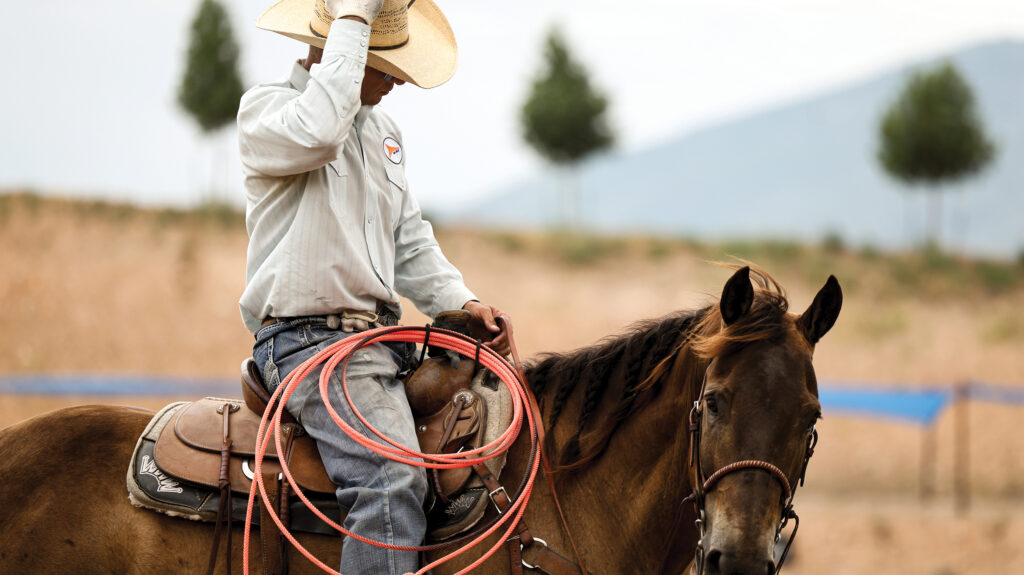
It’s the help horses that allow a staggering catch percentage for today’s best helpers. At last fall’s ARHFA World Championships, Driggers helped on five different horses to chase 130 steers—headlined by his BFI-champion jackpot horse, Oliver, the now 10-year-old gelding Chics Like Hickey (by Hick Chickaroo out of Dee Bars Lust by Dee Bar Rock). He missed one, and got the buzzer once. Then there’s Hanson, who rode six horses on the head side and three to heel. Of his 93 sets of horns, he missed twice and got two buzzers. Of the 78 he heeled, he only missed one leg, one time.
“It’s kind of like the first steer at a 6-header like the BFI,” explained Hanson. “Take a low-risk shot and make a run that can be repeated all day. Get tapped off. A run that’s repeatable looks really good at futurities. Four identical runs will tell the judges it’s no accident.”
Back when Wadhams was helping at Quarter Horse shows, he was simply paid to catch. So he never took chances. Now, time is factored into the score. Helpers have to be closer to the barrier, take more chances and be more correct, he said.
Hanson’s goal is to catch up to the super-fresh steer, match pace with it and gain control of it going down the arena to provide the perfect handle. Then he sets up the futurity horse to be shown with an aggressive heel shot or to come around and get set up for a big stop.
“I try not to trick ’em,” he said. “It doesn’t go well every time.”
And although time is a factor, Hanson said it doesn’t count for as much as you might think.
“Time does matter—you can’t lay off,” he said. “But in the middle of the arena, you can get that steer shaped so that heeler can get plugged in and set up for the turn. The difference between being 6.5 or 8.0 seconds means you’re flirting with a point and a half. Whereas, you can make up 3 or 4 points if your heeler isn’t rushed.”
Futurity heelers want you to hit them a little so they can post up and hold the steer, and that can smoke a header’s coils in three runs. Hanson counts on his Fast Back Ropes, and Kirchenschlager likes the longevity of his Heat head ropes by Classic. On the heel side, Hanson said helping on the back end is simple: get in there and catch two feet.
“If it sets up good, you can heel fast,” he said. “But what works best is if that header sees you about to throw, he still has a stride or two to get that young horse stood back up and set up for the big face.”
Mental game

For Kirchenschlager, helping is far more nerve-wracking than showing a horse.
“They chose you out of everybody there,” he said. “And they already have so much money invested. They’re counting on you to rope at a very high level. Messing up for those people ruins your day. It really does.”
When Kirchenschlager is showing, he likes to choose a helper he’s had previous success with, such as his old Colorado buddy Shay Carroll, or Davison or Hanson. The latter also knows the excessive time, energy and money invested by owners and trainers. So, he’s determined to be absolutely mistake-free.
“If I mess up, they miss the opportunity to make all their blood, sweat and tears pay off,” Hanson said. “I hate it. It kills me.”
Wadhams recalls helping Yates in the heading one year on one of the Lazy E’s greatest mares. But he’d also been paid to help the last horse out, that really needed a win to become the year’s Superhorse. All eyes were on that last run—on the helper.
“J.D. was winning it, but I never let that play into anything,” Wadhams recalled. “It didn’t matter who I was helping, I tried to catch every steer. I’d still rather miss while showing my own horse than for someone I was helping. That’s just the way I was.”
Hanson, too, said he’s completely changed his practice methodology to provide the exact same look for everybody in every round.
“To be a good helper is pretty hard, and it’s mentally grueling,” Motes said. “There are only a handful of people with the mental grit and ability to stay hooked and focused.”
And, at times, it resembles a bulldogger and hazer helping and trying to beat each other all in the same go-round. Less than two months before they roped together at the 1996 NFR, Yates and Wadhams were each showing Junior heel horses at the World Show and happened to tie for the world title. They had a rope-off.
“I was showing a 6-year-old heel horse of Ed Gaylord’s called Top Hat Jack and J.D. was showing a 5-year-old called Poco Bar Tivio from the Cross Bell Ranch,” Wadhams recalled. “We roped, and then actually switched horses right there in the arena and headed for each other. He beat me.”
With rodeoing, you know your partner has the same costs as you do and that he doesn’t win unless you win. But there’s more pressure at futurities. The best helpers have been part of several big wins, but they tend only to remember the rare flubs.
“I almost melted down right in the arena once,” Hanson recalled. “I was helping Bob Mote at the 2023 Royal Crown in Rock Springs. I’d seen his horse progress, so I knew he’d been working his butt off. We were high call. He gets a great start and sticks it on him. It’s just a layup for me. And I completely miss the steer. I wanted to just crawl out of the arena and have him rope-whip me at the back end. Bob deserved that win. He earned that win.”
“They chose you out of everybody there. And they already have so much money invested. They’re counting on you to rope at a very high level.”
Tate Kirchenschlager
Roping for hire

Hanson said he’s about the most expensive helper going, but if he happens to miss a steer, he discounts his rate by 80%. Compensation has definitely changed over the years. When Wadhams was helping at Quarter Horse shows, he’d earn $100 a day to rope four, plus get half the jackpot money.
“I helped so many that I might make $1,000 or $1,500 a day, which was a hell of a job,” Wadhams recalled. “Staying at the Hilton and eating at the steakhouse was better than staying with J.D. in the Capri camper.”
Today, some guys split a paycheck into straight thirds between the owner, trainer and helper. Hanson doesn’t feel a helper deserves that proportion, plus he likes to know that if he does a good job, he’ll make an exact amount.
“I’m a flat-fee guy, for the most part,” Hanson said. “It made sense to me because I’ve invested in my own horses and pay for my own fuel, stalls and more. I’m liable to have up to $2,500 in expenses just for me to go. And I feel like someone would rather pay an extra couple hundred to me and know I’m not going to show up on a colt or a horse that wasn’t good enough to enter so it gets helped on.”
Kirchenschlager, too, is a flat-rate guy. And he’s big on tipping if a lucrative win comes together.
“Helping is the most unnoticed job in team roping,” he said. “I don’t do it to get credit, but because I just like to compete and to be a part of people winning.”
While this story is about the competitors at shows getting the flag, everyone is clear: without the owners of these horses, this world wouldn’t go ’round.
“If my guy wins, I don’t want credit,” Hanson said. “He just hired me to catch. I don’t deserve an ‘attaboy.’ Owners are the ones sticking their necks out to make this all work.”
—TRJ—





